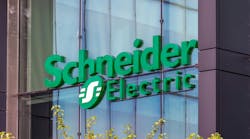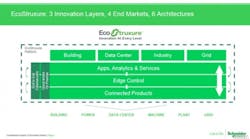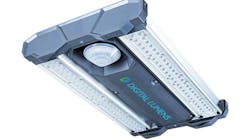Latest from Industry
Schneider Electric has launched a platform to support Internet of Things (IoT) integration for buildings, utility grids, industrial applications and data centers. Dubbed EcoStruxure, the offering is an open, scalable architecture for connecting IoT-enabled devices so they can be used to enhance application capabilities and support analytics of the data the devices produce.
Along with the EcoStruxure platform itself, Schneider launched a community to support and extend the technology, with Microsoft and Intel among its first allies. The system uses Microsoft’s Azure cloud platform to deliver its digital services, apps and analytics, and Intel’s Field Programmable Gateway Arrays (FPGA) to power its sensors and devices. New partnerships will be continually added with specialized technology providers such as Zuora, which makes cloud-based subscription systems, and larger players such as Panasonic, which recently partnered with Schneider on HVAC and building management systems.
The EcoStruxure platform provides the architecture for IoT device control, remote or on-premises access, advanced automation and a portfolio of apps, analytical tools and services using open, vendor-agnostic protocols. Schneider is drawing on a plan of focused investment in research and product development in the areas of software, analytics and services, coupled with the integration of acquisitions in recent years such as Invensys, Telvent and Summit Energy.
“Our innovation technology stack is critical to our open innovation approach, designed to deliver the most innovative IoT-enabled solutions to our customers,” said Prith Banerjee, Schneider’s chief technology officer. “Introducing a comprehensive suite of apps, analytics and services built on the capabilities from within Schneider Electric and our network of partners and developers, enables our customers to benefit from open, interoperable and future-proof solutions that maximize the value, performance, reliability and efficiency of their entire operation and enterprise over time.”
Schneider has been developing the system in trials with large customers in buildings, industry, data centers and the grid for several years, Banerjee said in a webcast this week.
Banerjee also expanded on Schneider’s long-term vision to shift a large part of its product and service offerings to an “as a service” concept where customers would pay for defined outcomes such as power with 100% safety, 100% usability, with a steady revenue stream compared to the “lumpy” cash flow of product and project business. EcoStruxure is an important step on that road.
“At some point in future we will transition to ‘as a service’ model for all we do,” Banerjee said. “We have not set a date for when that will happen, but that’s the direction we are going.”













